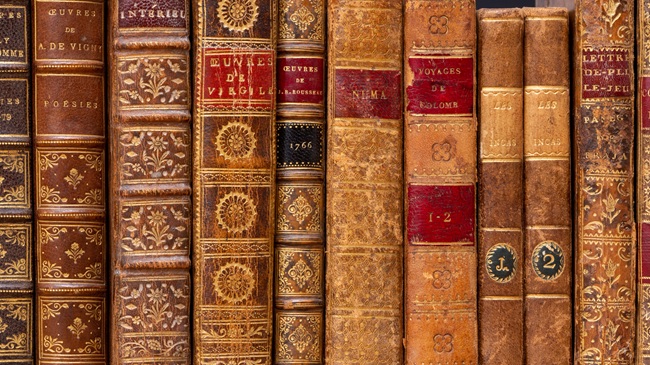Apr 15, 2025
Apr 15, 2025

To understand the emergence of enlightenment and the process of renaissance that took place in France, we have to take a look at the political situation in France during this period. Louis XIV’s reign, from the 17th through 18th centuries, more precisely from 1661 to 1715, was a site of a chaotic situation at one hand at the same time very luminous both politically and culturally and had a lasting influence throughout the Europe. His reign marks the entire French 18th century, which is referred to as, and the title of a book by the luminous French writer Voltaire, the "Century of Louis XIV". The period marked an unprecedented political experience, absolutism in the French way that made impact on economic, cultural and ideological heritage.
The Renaissance, a cultural and intellectual movement that began in Italy in the 14th century and spread across Europe, was coming to an end by the time Louis XIV ascended the throne and was entering into what is called a Baroque period which saw the consolidation of absolute monarchy in France. Baroque period, an era of grandeur, emotional turmoil, dramatic and artistic expression, religious architecture inspiring devotion, reflection of power and ambition of kings and their kingdoms, lavish palaces and display of princely wealth is considered to have spanned roughly from 1600 to 1750. Baroque music, which is immortal, saw the emergence of world famous composers like Bach, Handel, and Vivaldi. Artists like Caravaggio and Bernini emphasized visual arts of contrast, movement, and realism.
France was no exception. Baroque art and architecture in France were characterized by opulence, symmetry, and classical influences. The Palace of Versailles became a symbol of opulence, equilibrium, grandeur, majesty and above all a royal authority that displayed Louis XIV's absolute power that used the palace to showcase his wealth, hosting sophisticated ceremonies and leisure. Louis XIV declared, "L'État, c'est moi" ("I am the state"), and ordered his regents, knights, noblemen, to reside around his lavish palace of Versailles, virtually making them dependent on his favor.
Louis XIV's reign was a golden age for French culture. He was a patron of the arts, supporting writers, musicians, and artists. The French Academy, founded earlier in the century, flourished under his reign, promoting the French language and literature. Some of the illustrious contributors of French culture of this era are:
Playwrights:
Molière (1622-1673): Arguably the greatest French comic playwright, his works like "Tartuffe," "Le Misanthrope," and "Le Bourgeois Gentilhomme" satirized social customs and human foibles.
Jean Racine (1639-1699): A master of tragedy, his plays such as "Phèdre," "Andromaque," and "Britannicus" explored intense emotions and psychological depth.
Pierre Corneille (1606-1684): Though his major works predate the height of Louis XIV's reign, he continued to write and influence the development of French classical tragedy with plays like "Le Cid," "Horace," and "Cinna."
Novelists:
Madame de La Fayette (1634-1693): Known for her novel "La Princesse de Clèves," a psychological exploration of love and duty, considered a landmark in French literature.
Charles Perrault (1628-1703): Famous for his collection of fairy tales, "Contes de ma mère l'Oye" (Tales of Mother Goose), which included classics like "Cinderella," "Little Red Riding Hood," and "Puss in Boots."
Poets:
Jean de La Fontaine (1621-1695): Best known for his "Fables," animal stories with moral lessons that satirized human behavior.
Nicolas Boileau (1636-1711): A leading literary critic and poet, his "Art Poétique" established the rules of classical poetry and influenced generations of writers.
Music:
Jean-Baptiste Lully (1632–1687): The dominant composer of the era, Lully created the French opera tradition with works like Armide and Cadmus et Hermione. He also developed the tragédie en musique, blending drama, dance, and music.
Marc-Antoine Charpentier (1643–1704): Known for his sacred music, including the Te Deum, and his contributions to opera and chamber music.
François Couperin (1668–1733): A master of the harpsichord, Couperin composed intricate and expressive keyboard works, such as Pièces de clavecin.
Jean-Philippe Rameau (1683–1764): A later Baroque composer, Rameau revolutionized harmony and opera with works like Hippolyte et Aricie and Les Indes galantes.
Other notable writers:
Blaise Pascal (1623-1662): A philosopher, scientist, and writer, his "Pensées" explored religious faith and human existence.
Madame de Sévigné (1626-1696): Her letters to her daughter provide a fascinating glimpse into the life and culture of the French court during this period.
Jean de La Bruyère (1645-1696): His "Caractères" offered sharp observations and social commentary on the customs and manners of his time.
The colourful tapestry of French literature during the reign of Louis XIV was woven by these authors reflecting the colors of ideals, order, reason, and clarity, while exploring themes of love, ambition, morality, and human nature.
Image (c) istock.com
01-Feb-2025
More by : Dr. Satish Bendigiri